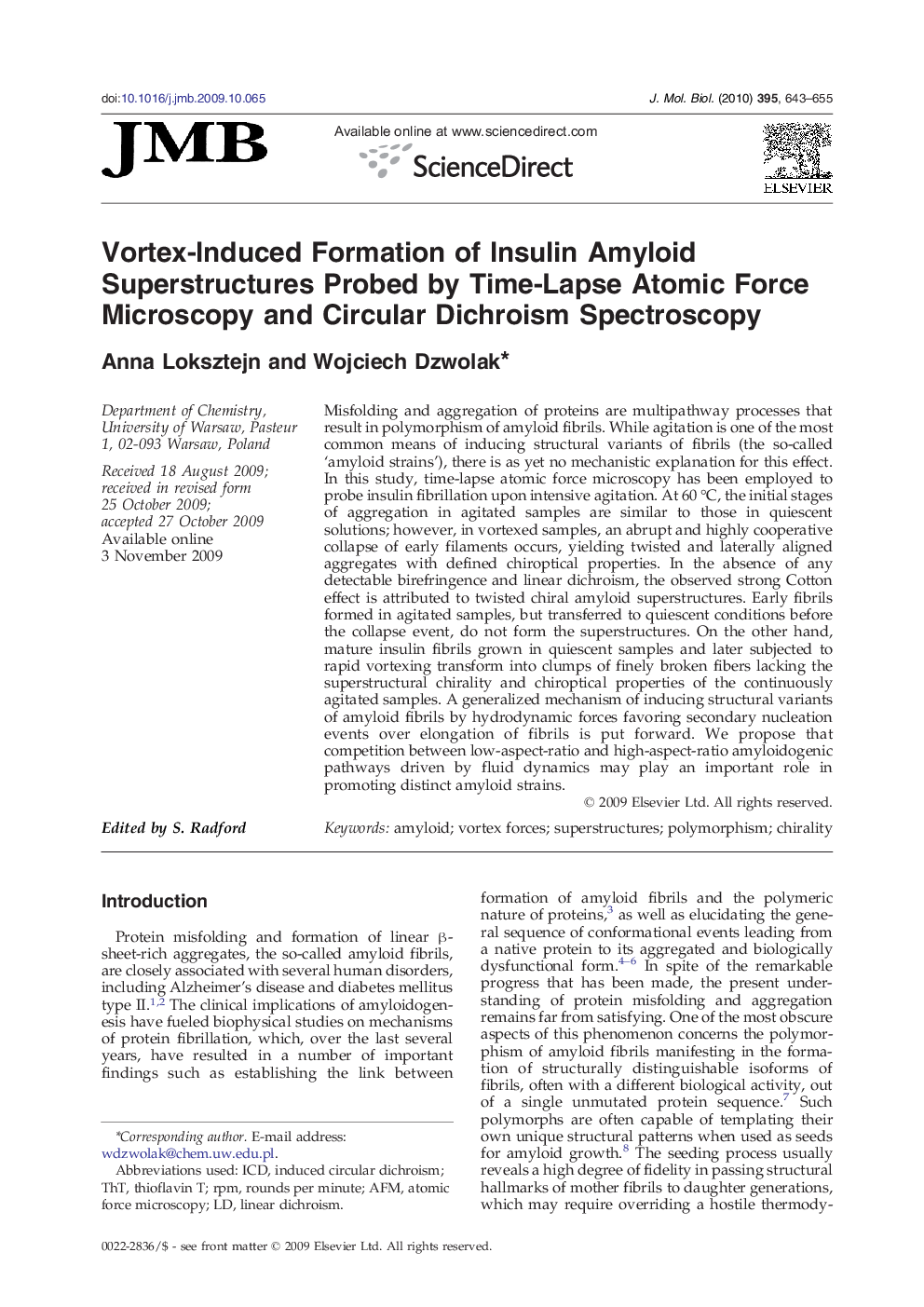| Article ID | Journal | Published Year | Pages | File Type |
|---|---|---|---|---|
| 2186164 | Journal of Molecular Biology | 2010 | 13 Pages |
Misfolding and aggregation of proteins are multipathway processes that result in polymorphism of amyloid fibrils. While agitation is one of the most common means of inducing structural variants of fibrils (the so-called ‘amyloid strains’), there is as yet no mechanistic explanation for this effect. In this study, time-lapse atomic force microscopy has been employed to probe insulin fibrillation upon intensive agitation. At 60 °C, the initial stages of aggregation in agitated samples are similar to those in quiescent solutions; however, in vortexed samples, an abrupt and highly cooperative collapse of early filaments occurs, yielding twisted and laterally aligned aggregates with defined chiroptical properties. In the absence of any detectable birefringence and linear dichroism, the observed strong Cotton effect is attributed to twisted chiral amyloid superstructures. Early fibrils formed in agitated samples, but transferred to quiescent conditions before the collapse event, do not form the superstructures. On the other hand, mature insulin fibrils grown in quiescent samples and later subjected to rapid vortexing transform into clumps of finely broken fibers lacking the superstructural chirality and chiroptical properties of the continuously agitated samples. A generalized mechanism of inducing structural variants of amyloid fibrils by hydrodynamic forces favoring secondary nucleation events over elongation of fibrils is put forward. We propose that competition between low-aspect-ratio and high-aspect-ratio amyloidogenic pathways driven by fluid dynamics may play an important role in promoting distinct amyloid strains.
